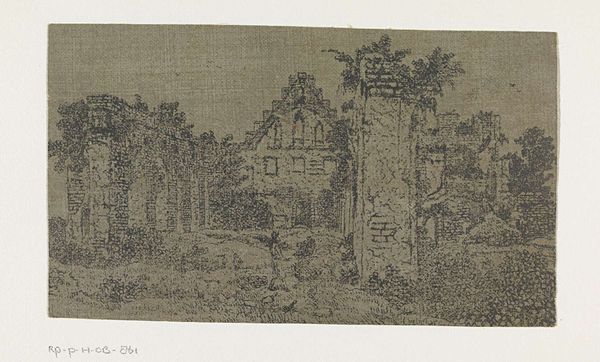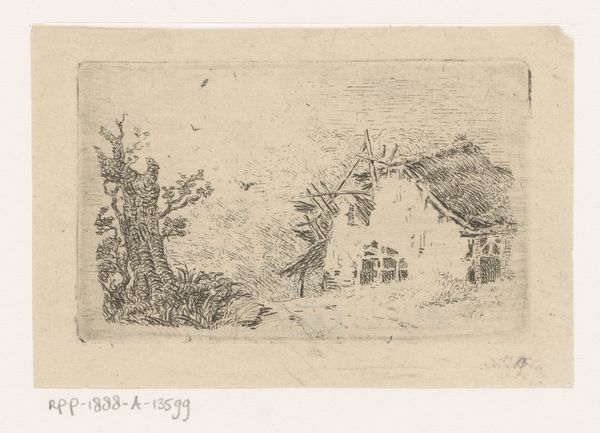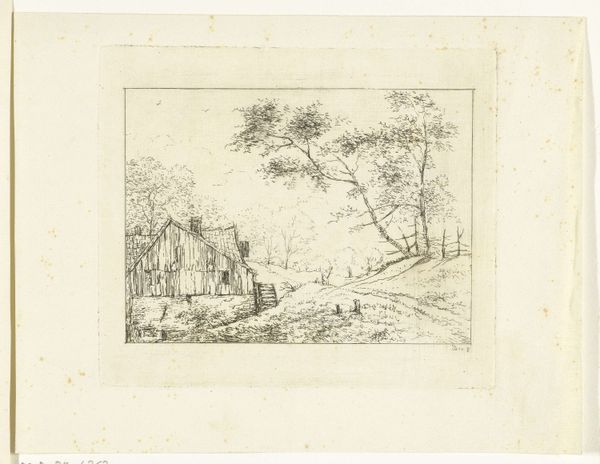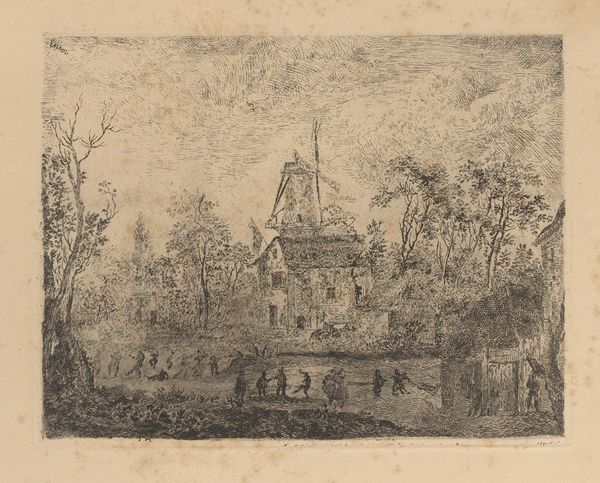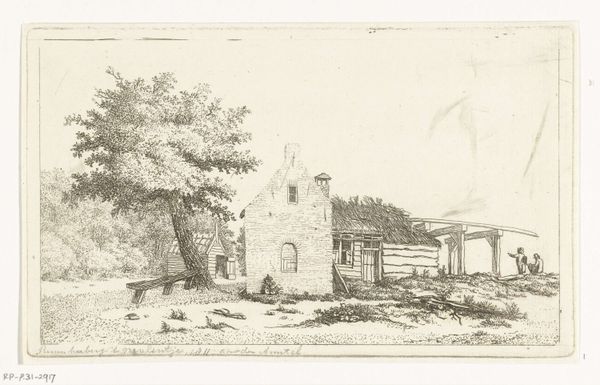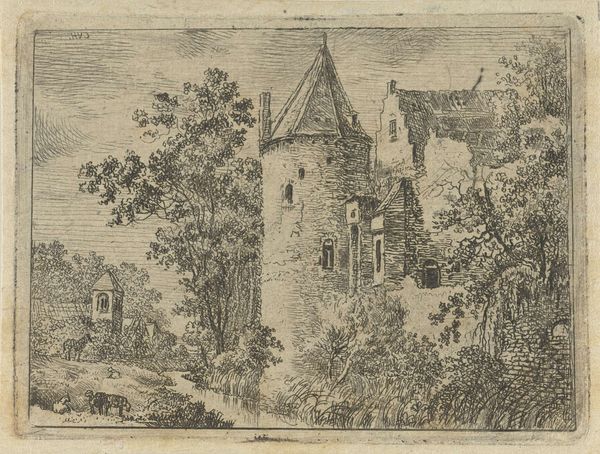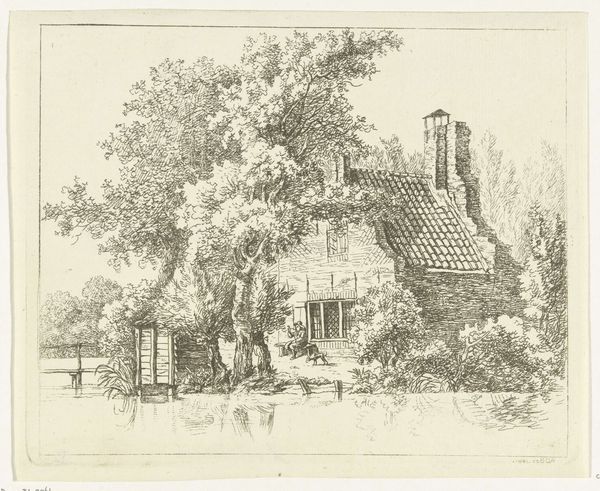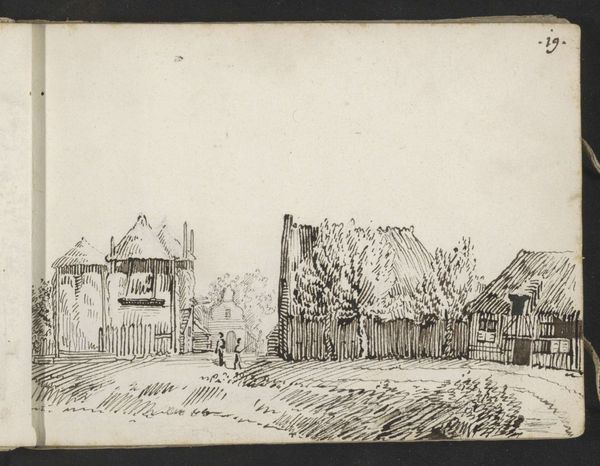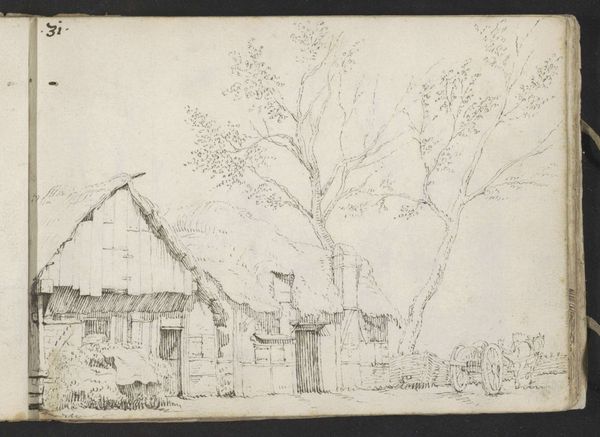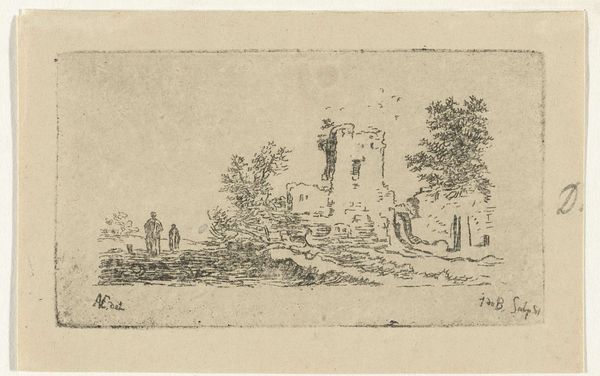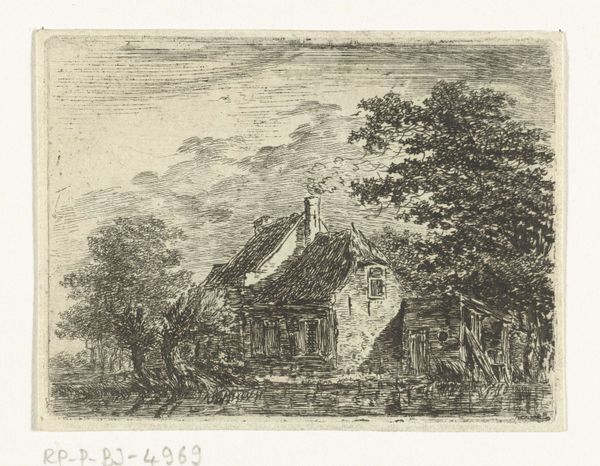
print, etching, architecture
#
dutch-golden-age
# print
#
etching
#
landscape
#
watercolor
#
architecture
#
realism
Dimensions: height 96 mm, width 175 mm
Copyright: Rijks Museum: Open Domain
Curator: Standing before us is Hercules Segers' etching, "Ruins of the Abbey of Rijnsburg, Small Version," dating from about 1618 to 1622. It's currently housed right here in the Rijksmuseum. Editor: My first thought? Melancholy. It has the distinct feel of something lost, overgrown. The remnants of grand architecture being reclaimed by nature. I notice a couple figures as well… barely registering at all. Curator: Absolutely. Segers had such a unique approach to landscape. What strikes me is his focus on texture and mood. The decay is almost tangible, you can almost smell the damp stone and see the passage of time etched—pun intended—onto its surface. The abbey, once a site of considerable power, reduced to this state… Editor: Right. Religious orders, like the one that occupied Rijnsburg Abbey, wielded substantial influence, accumulating wealth and land over centuries. In their prime, monasteries controlled vast estates. So to see them like this—well, who benefitted from their demise? Who gains when institutions falter? Curator: That’s an intriguing point. Segers isn’t just showing us decay, perhaps, but also prompting us to reflect on power and transience. He made very unique printing techniques, experimenting with colored inks, unusual papers, and even textile impressions to achieve those textures that so enthrall me. Editor: There’s definitely something to be said about the printing process too. The labor, the intention of distributing many prints. Considering the social disruptions of the era - the rise of Dutch power, challenges to Catholicism—does Segers see beauty or a warning sign in ruin? Is he simply capturing landscape, or making an ideological comment through allegory? Curator: He definitely possessed an eye for the sublime in the decaying. Remember, the Dutch Golden Age was a period of incredible transformation. There's maybe a whisper of human vulnerability woven in with the landscape. A fleeting whisper that suggests we, like the Abbey, will fade into the scenery. Editor: Yes. Maybe "melancholy" is too passive. It’s more of an active contemplation. He invites us to really interrogate who we are and what structures we build, understanding they might not withstand history. It leaves you wondering. Curator: That's it. The wonder stays long after we look away. Editor: Indeed. It’s history haunting the present through art.
Comments
No comments
Be the first to comment and join the conversation on the ultimate creative platform.
